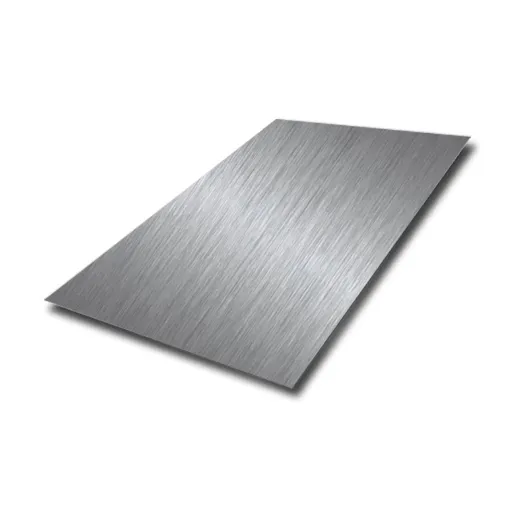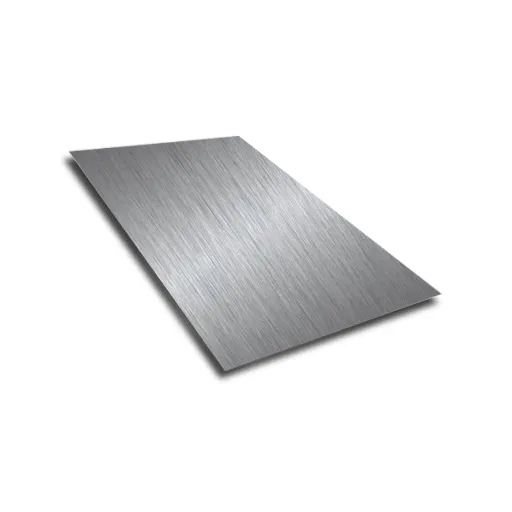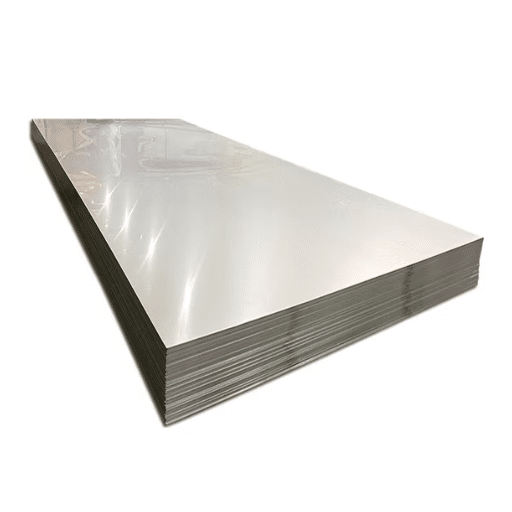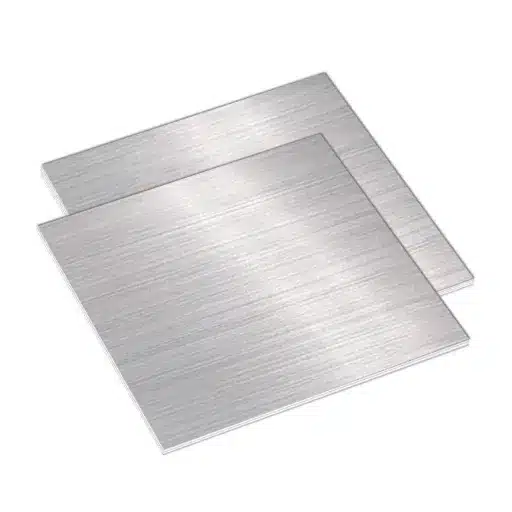The question of whether titanium is stronger than steel in critical areas of engineering is one often argued over. Both materials are noted for the individual attributes they stand for-so much so that one would use them for different purposes depending on the demands of strength, weight, and durability. But which one is really “stronger”? It depends in actuality on what you mean by strength—whether you mean tensile strength, corrosion resistance, or strength-to-weight ratio. Their physical properties differ, contrasting titanium and steel, along with their industrial applications and behavior under varying conditions. This article shall give you a close-up look at unraveling the complicated worlds of these two giants to try and determine which is better for your application and, more importantly, the real-world industries in which this relationship finds some relevance.
Understanding the Basics of Titanium and Steel
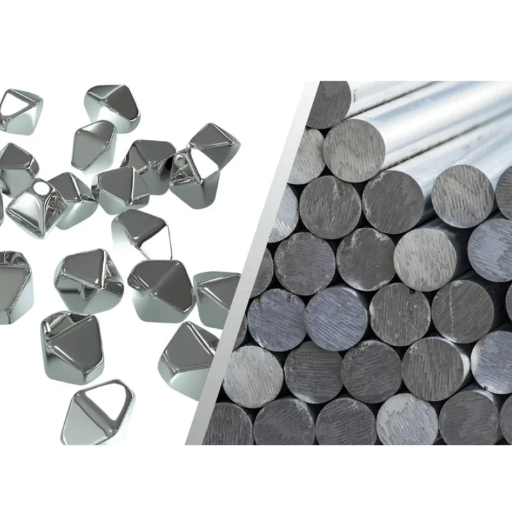
Titanium exhibits lightweight quality and features high durability with a good strength-to-weight ratio and amazing corrosion resistance. With approximately 45% less weight than steel, titanium possesses almost equal strength, thus being preferred in aerospace, medical, and automotive industries. Also, the corrosion resistance and ability to withstand extreme temperatures add to the durability of titanium, where products are used in a rugged or challenging environment. On the other hand, the cost of titanium is quite high, and in some cases, it is harder to machine than steel. This may determine its practicality for some applications.
Steel is an alloy almost always containing iron and carbon and is commonly regarded as highly versatile and cheap to obtain. It can exhibit huge tensile strength and is thus applied for heavy-duty constructions, infrastructural applications, and tools. Steel offers relatively better welding and machining options, and therefore, it has found widespread use across industries. It, in fact, weighs more than titanium and can be particularly prone to corrosion, requiring potential special treatments or coatings with respect to the application of the item.
What is Titanium?
The transition element titanium boasts a great strength-to-weight ratio, corrosion resistance, and good biocompatibility. It is about half as dense as steel but nearly as strong. In aerospace engineering, it finds applications in diverse fields requiring both high strength and high performance, such as implants and equipment. Titanium forms an oxide layer on its surface, which is quite stable and will protect titanium from oxidation and corrosion under almost any conditions, be it exposure to strong attack from seawater or chemicals. With a melting point of around 3,034°F or 1,668°C, it stays well in high-temperature conditions. However, the energy required for extracting this metal and for its intermediate processing stages is much more compared to most of the other metals, thereby making titanium costly. These factors make the metal a challenge for wide-scale adoption despiteits superior mechanical properties.
What is Steel?
Steel is an alloy of iron with differing percentages of carbon, generally from 0.02% to 2.1% by weight, depending upon what properties the iron is being endowed with. Besides having carbon, steel may be placed in the category of alloy steels: it can contain manganese, chromium, nickel, and vanadium to name a few, depending on the particular property it is designed to exhibit, such as resistance to corrosion, toughness, or resistance to heat.
Modern steelmaking is largely a tale of two methodologies: integrated (blast furnace) and electric arc (EAF). The integrated process uses iron ore, coke, and limestone, whereas the EAF process uses mostly recycled steel scrap, thus being considered a greener alternative. With the global production estimated at over 1.8 billion metric tons per annum, steel continues to be the critical factor for all infrastructures, automotive production, machinery, and many other industrial applications. Its recycling ability without degrading reciprocates this status it has as one of the most diverse and essential materials in modern engineering and construction.
The Properties of Titanium and Steel
Titanium Properties:
- Density: Titanium does have a low density of about 4.51 g/cm³, thus being extremely lightweight compared to steel, which is a great advantage in air and automotive industries for whom weight is a very important factor.
- Strength-to-Weight Ratio: Titanium has an excellent strength-to-weight ratio and is considered better than steel in many applications requiring strength but less weight.
- Corrosion Resistance: Titanium is highly resistant to corrosion with the salt water, chlorine, and acidic atmospheres, etc., making it very much suitable for marine, chemical, and medical applications.
- Melting Point: High melting point-temperature of Titanium is about 1,668°C (3,034°F); hence, Titanium can perform excellently in high-temperature environments.
Steel Properties:
- Density: With a density of about 7.85 g/cm³, steel is considered heavier as compared to titanium, though it imparts aesthetic strength to demand heavy application.
- Strength: Steel exhibits a wide range of strength values depending on its composition and treatment, with tensile strengths ranging from 400 MPa in mild steels to over 2,000 MPa in high-strength alloys.
- Toughness: Impact toughness is considered paramount for building and mechanical systems, thus making steel an even more preferred option.
- Melting Point: The melting point of steel varies depending on its carbon content and alloying elements but averages around 1,370°C to 1,510°C (2,500–2,750°F).
Strength Comparison: Titanium vs Steel
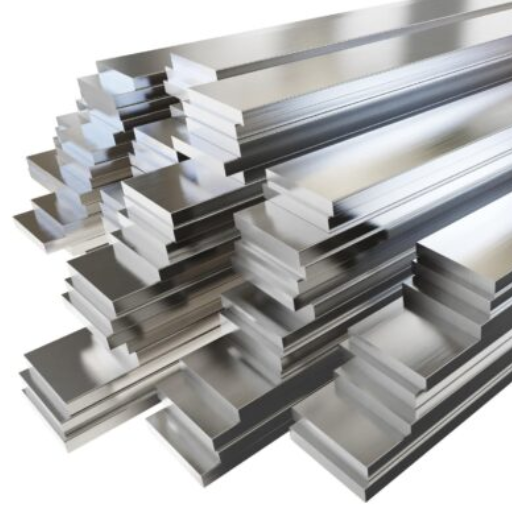
To give a brief comparative study between titanium and steel, one can say that both are incredibly strong. Yet, their different properties make their applications vary:
- Strength-to-Weight Ratio: Titanium has a significantly higher strength-to-weight ratio than steel, making it ideal for applications requiring lightweight and high-strength materials, such as aerospace and sports equipment.
- Tensile Strength: Highest-grade steel alloys offering tensile strengths over 2,000 MPa, titanium alloys somewhat range between 900 MPa and 1,200 MPa. Steel can withstand higher peak loadings whereas titanium counters the loading with weight advantage.
- Corrosion Resistance: Titanium, anyway, offers an inherent corrosion resistance to most of the steels, especially where the rusting of steel would be caused by exposure to seawater or chemicals, hence providing a better choice for such marine and medical uses.
Each material excels in distinct scenarios. Steel finds applications only where higher tensile strength and utmost economy are needed, while titanium finds applications in situations where weight and durability remain top priorities.
The Strength of Steel
Steel happens to be one of the most often used metals by engineers and manufacturers. The first considerations are utmost strength and versatility. Steel properties had been perfected in more recent times with the development of newer metallurgical techniques, enabling design engineers to develop and produce specific alloys directed at particular applications. One instance is high-strength low-alloy (HSLA) steels: They are designed primarily to give higher tensile strength, while having good weldability and formability. These are mainly used in structural applications, automotive parts, and the construction of skyscrapers.
Moreover, the property of steel to go through enormous stresses and loading without causing permanent deformation makes it an excellent choice in bridge-building and heavy engineering applications. Recent findings show that advanced high-strength steels (AHSS) promise major steel weight reduction in exchange for better crash ratings for passengers, and thus improved fuel efficiency. Steel is thus capable of being categorized into an environmentally conscious school of industries. Another plus for steel is that it is highly recyclable. Over 70 percent of steel in the world is recycled every year.
Is Titanium Stronger Than Steel?
When we look at strength comparisons between titanium and steel, one is essentially looking at their mechanical properties. Being a high-strength-to-density ratio metal, titanium has its best strength where lightweight and corrosion resistance are required, like aerospace engineering and medical implants. Titanium offers tensile strength for various alloys from about 30,000 psi to about 200,000 psi. While steel presents a much wider range in value of tensile strength, especially in advanced or alloy forms, it can grow as high as 300,000 psi in special grades such as maraging or tool steels. Steel is, however, heavier and might also be more brittle than titanium under certain conditions; titanium tends to be tougher comparatively and lighter by weight. Hence, such a decision would have to depend on the specific requirements of the application, the darkest limitation: weight consideration, corrosion resistance, and strength in various other scenarios.
Durability and Corrosion Resistance
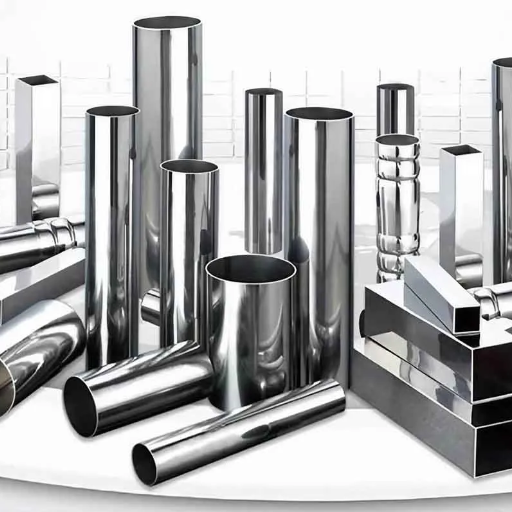
Steel and titanium are both convertible hard metals, but they greatly differ when it comes to corrosion resistance. Steel is temporary when it comes to corrosion protection, since it will lose that property once it gets wet, unless it has been treated with deliberate coatings or if it is stainless. At the same time, titanium (Ti), for its part, produces a protective oxide film that is highly corrosion-resistant even under corrosive conditions in marine and chemical applications. Consequently, Ti stands out in long-term durability-demanding applications in conjunction with corrosive conditions on corrosion resistance and maintenance requirements.
Corrosion Resistance of Titanium
Titanium and corrosion resistance applications are highly demanded with increasing corrosion risks. For instance, in the aerospace industry, titanium is employed for airframe and engine components subjected to atmospheric moisture and high operating temperatures. Likewise, titanium is widely used in shipbuilding and offshore construction in the marine industry because of its resistance to seawater corrosion.
Construction of equipment in chemical processing plants, such as heat exchangers, reactors, and piping systems, is another major working ground for titanium, where the working conditions tend to be those of very highly corrosive environments with the frequent presence of acids, chlorides, and many other reactive agents. Furthermore, in the medical field, titanium represents the first choice for implants, prostheses, and surgical instruments due to its biocompatibility and resistance to body fluids.
Corrosion Resistance of Steel
Making the Choice: Titanium vs Steel
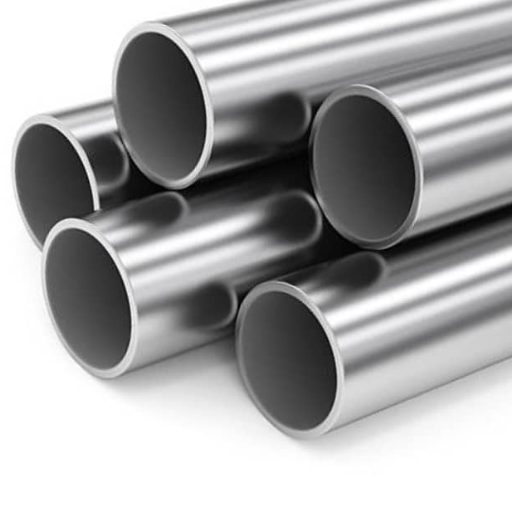
When considering secondary factors to decide between titanium and steel, one will obviously go through strength, weight, cost, and environment where materials will be facing.
- Strength-to-Weight Ratio: Titanium, by its nature, outweighs steel in strength against weight ratio and is, therefore, suitable in applications where this feature of being lightweight yet with high strength is required, such as aerospace and medical implants.
- Corrosion Resistance: Titanium has superb resistance to corrosion in even extreme environments like saltwaters, while steel requires paints and protective coatings, or alloy modifications to resist rust and attack.
- Cost Efficiency: Steel provides a much more cost-efficient alternative than titanium, thus better suited to large-scale projects or where the bottom line comes into focus.
- Durability Under Stress: While both are very strong, steel offers greater stiff properties, more applicable on load bearing or structural applications.
Summary of Key Differences: Titanium vs Steel
|
Key Parameter |
Titanium |
Steel |
|---|---|---|
|
Weight |
Lightweight, reduces overall structure mass |
Heavier, increases structural weight |
|
Strength-to-Weight Ratio |
Superior, ideal for weight-sensitive designs |
Lower in comparison to titanium |
|
Corrosion Resistance |
Excellent, resists rust and seawater |
Moderate, requires coatings to prevent rust |
|
Cost |
High, expensive manufacturing processes |
Lower, cost-effective for large projects |
|
Durability Under Stress |
Flexible but strong under moderate stress |
Higher stiffness, ideal for heavy loads |
|
Thermal Conductivity |
Lower, less efficient heat transfer |
Higher, better at transferring heat |
|
Magnetism |
Non-magnetic, suitable for sensitive equipment |
Magnetic, not viable for such applications |
|
Recyclability |
Highly recyclable and sustainable |
Also recyclable but less environmentally friendly |
|
Wear Resistance |
Moderate, prone to scratches |
High, resists scratches and abrasion |
|
Applications |
Aerospace, medical implants, premium goods |
Construction, automotive, general industry |
When to Use Titanium
Highly considered in high-performance applications with its unique biocompatibility, corrosion resistance, and strength-to-weight ratio, titanium has managed to gain massive acceptance in aircraft-building and related fields due to the imperative nature of weight reduction for structural performance in small components. Such an environment takes away the liberty of using other materials since corrosion resistance is a must: marine environments, chemical plants, and medical implants, all of which are exposed to moisture, salt, or aggressive chemicals.
Titanium is used to lighten high-performance sports equipment while ensuring that it stays under load during all conditions. Biocompatible titanium is useful in surgical tools and prosthetics because it resists corrosion in the human body and does not create much biological response. Although titanium is explicit in price when compared to steel, it is, however, considered to be worth every cent when considering its rare attributes that suit applications where performance and durability are discounted.
When to Use Steel
Applications of Titanium and Steel in Various Industries
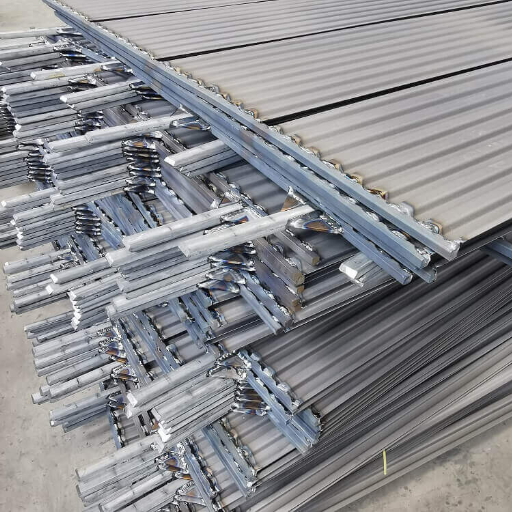
- Aerospace Industry
- Titanium is in very great demand in aerospace because of its high strength-to-weight ratio, corrosion-resistant properties, and high-temperature resistance. It serves as a Phase-I material for making an aircraft and covers components such as airframes, jet engines, and landing gears. For example, 15% of the structural weight of the Boeing 787 Dreamliner is titanium.
- Steel, on the other hand, perhaps stainless steel and other high-performance alloys, finds aerospace applications where extreme durability and fatigue resistance are required. With its use in critical components manufacture, it makes fixing, assembly for landing gears, as well as aerospace-grade tools.
- Medical Industry
- Titanium is used for surgical implants (i.e., hip and knee replacements) and dental implants, provided it has biocompatibility and inertness to bodily fluids. It is perfect for prosthetics because it is lightweight and reduces strain on the patient during heavy use over a long time.
- Steel, especially in the form of surgical instruments, orthopedic rods, and hospital equipment made of 316L medical-grade stainless steel, has Unequalled sterility, durability, and cheapness.
- Automotive Industry
- Steel still finds great favor in manufacturing owing to its economic considerations and tensile strength. Advanced high-strength steels (AHSS) are used in bastion constructs comprising vehicle frames, body panels, and safety components like crumple zones. According to the World Steel Association, steel accounts for nearly 60% of a car’s weight.
- Due to high costs, titanium is, however, mostly retained in high-performance and luxury cars for engine components and exhaust systems for the lightweight nature of titanium, thus better fuel efficiency, and speed.
- Construction Industry
- Steel is modern infrastructure with all kinds of skyscrapers, bridges, pipelines, and railways constructed with it. Such versatility is indispensable in modern life, yet the steel must prevent the infliction of heavy loads. The steel-reinforced concrete acts as an earthquake-resistant structure to hold safety and long life.
- Some titanium can be used in cladding or façade elements for high-end buildings, albeit it is not commonly used in construction because of cost considerations.
- Energy Sector
- Titanium is important in offshore oil and gas extraction equipment, geothermal plants, and desalination plants, protected against corrosion in saltwater and high temperature.
- Steel is of great importance in terms of building energy infrastructure, encompassing pipelines, wind turbines, structures for power generation plants, and fuel storage tanks. Corrosion resistance and ability to resist high temperatures put stainless steel in the position of guaranteeing the feasibility of components like boilers, turbine blades, and nuclear reactor components.
In eternal life support, titanium and steel are competing for the livelihood of a lot of industries, with their range of application still widening with newer alloys and technologies. Both these materials continue greatly contributing to the advancement, safety, and efficiency in myriad areas, thus making them sublime contenders for any marketplace today.
Construction Uses
Major players in this industry find themselves bound by the need for advanced materials, primarily steel and titanium, given their distinct mechanical properties and versatility. Structural steel, therefore, provides extremely high tensile strength, ductility, and resistance to various external forces, thereby becoming a necessity in the construction of increasingly high-rise buildings, bridges, and industrial frameworks. Titanium, meanwhile, being a relatively expensive material, has found selective applications for construction in situations of lightweight yet exceptionally strong materials or extremely corrosion-resistant environment-either coastal or chemically aggressive.
Medical Applications
- Prosthetics and Implants
- Dental Applications
- Cardiovascular Devices
Materials for manufacturing stents and heart valves include stainless steel and cobalt-chromium alloy. The mechanical strength and resistance to fatigue provided by these materials are an appropriate remedy to acute dynamic pressure on blood vessels. Approximately 3 million stents are implanted all over the world every year, percentage that shows the real value of treating cardiovascular diseases.
- Drug Delivery Systems
Reference Sources
1. Numerical Simulation and Experimental Investigation of SiC/Ti-6Al-4V Metal Matrix Composites:
- A 3D finite element model was developed to study laser melt injection (LMI) on Ti-6Al-4V substrates.
- The study highlighted the importance of laser power and scanning velocity in optimizing the molten pool’s temperature and morphology.
2. Effects of Induction Heating on Nb-Ti Micro-Alloyed Steel:
- Induction heating in the Endless Strip Production (ESP) line led to significant microstructural changes in Nb-Ti micro-alloyed steel.
- Austenite grains coarsened with increased isothermal time, while Nb and Ti precipitates dissolved into the matrix, enhancing mechanical properties.
3. Effect of Austenitizing Temperature on Nb-Ti Microalloyed Steel:
- Austenitizing temperature significantly influenced the microstructure and mechanical properties of Nb-Ti microalloyed steel.
- Higher temperatures dissolved most precipitates, leading to finer re-precipitated particles and increased strength but reduced toughness.
Frequently Asked Questions (FAQs)
Q: Is titanium stronger than steel?
A: The strength comparison between titanium and steel largely depends on the specific types of each being compared. While titanium has a high tensile strength, certain steel alloys can surpass titanium in terms of yield strength and overall durability. For example, stronger steel grades can outperform titanium in heavy-duty applications. However, titanium is known for its exceptional strength-to-weight ratio, making it lighter than steel and suitable for various aerospace applications. Ultimately, the choice between titanium and steel should consider the specific requirements of the project.
Q: What are the applications of steel and titanium?
A: Both steel and titanium have diverse applications across various industries. Steel is widely used in construction, automotive, and manufacturing due to its strength and cost-effectiveness. Meanwhile, titanium, particularly pure titanium and its alloys, is favored in aerospace, medical implants, and marine applications due to its corrosion resistance and lightweight properties. Depending on the alloy, titanium can provide solutions where weight savings are critical, whereas steel parts are often chosen for their robustness. Understanding the applications of steel and titanium helps in making the right metal choice for your application.
Q: What is the difference between titanium and stainless steel?
A: Titanium and stainless steel are both popular materials, but they have distinct differences. Stainless steel, being an alloy, typically contains chromium, which enhances its corrosion resistance. Titanium, on the other hand, is a pure metal that also offers excellent corrosion resistance but is generally lighter. While titanium may be more expensive than steel, its strength and durability make it a preferred choice in demanding environments. The difference in properties means that the choice between titanium and stainless steel should be driven by the specific needs of the application.
Q: Which is the strongest metal?
A: When considering the strongest metal, it is essential to differentiate between various properties such as tensile strength and yield strength. While titanium is often celebrated for its strength-to-weight ratio, steel, particularly stronger steel grades, can exhibit greater yield strength and toughness. Materials like tungsten and certain steel alloys may be classified as the strongest metal on earth based on specific measurements. Thus, the strongest metal can vary depending on the application and criteria being evaluated.
Q: How does steel vs titanium perform in weight considerations?
A: In weight considerations, titanium is significantly lighter than steel, making it an attractive option for applications where weight savings are critical. Titanium’s strength allows it to perform well in high-stress environments without the added weight of steel. However, when considering the strength of titanium versus steel, one must account for the specific alloy and application requirements. In some cases, the additional strength of certain steel types may offset their heavier weight. Therefore, understanding the performance characteristics of both materials in various applications is crucial for making an informed decision.

